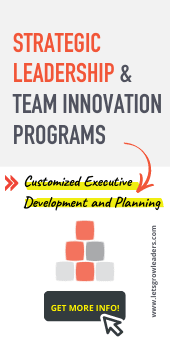An open door policy doesn’t get you what you need to lead.
The intent behind your open door policy is good: a door that is figuratively always open to encourage transparency, open lines of communication, a standing invitation for your employees to bring you issues that affect them or their work.
The intent is good, but the reality is more complicated. In fact, your open door policy may be causing your team more harm than good and limiting your leadership.
3 Problems With Your Open Door Policy
1. Your Door is Literally Always Open.
An open door policy doesn’t mean you are constantly interruptible. Constant interruption prevents you from thinking deeply and serving your team in the ways only you can. If you allow a constant barrage of “Gotta minute?” to obliterate your day, you won’t be able to lead your team anywhere.
An open door policy doesn’t mean your door (if you have one) is literally open all the time. We helped one senior leader overcome this challenge by defining 90 minutes of deep-think time in the morning and again in the afternoon where everyone committed not to interrupt anyone else unless it was an emergency.
That may not work in your setting, but the principle is important. How can you give yourself and your team the space to focus?
2. You Don’t Get All the Information You Need.
Your people know things you need to know. They can spot problems before they spin out of control. They know what irritates your customers. They’ve already created micro-innovations to be more productive and better serve your customers. They’re your greatest asset – but only if you hear what they have to say.
Problem-solving innovation isn’t going to walk through your open door. [Tweet This]
Most of the information that will walk through your open door are complaints. There’s nothing wrong with this necessarily. You need to be aware of problems – especially those that create a hostile workplace.
An open door policy isn’t enough. Occasionally, you’ll have someone walk through your open door with a great idea. I’ve had it happen. But most of the great ideas will stay locked in your employees’ minds.
To get the information you need to make the best decisions, you’ve got to intentionally go ask for it. Most employees are busy doing their jobs. They may not even realize they have experience or wisdom worth sharing. If they do have insights, they may believe you’re not interested in hearing them, no matter how many times you talk about your open door policy.
Take the initiative and seek out the information you need. Regularly ask your team how things are going, how you can help them to do their job more effectively or serve the customer, or what’s getting in their way. Ask them to teach you how they do their work.
3. You’re Not Strategic.
 The final leadership problem with an open door policy is that it puts you in a reactive mode. You’re not thinking strategically about what will move your team or the business forward. You’re waiting and responding to the issues that come to you.
The final leadership problem with an open door policy is that it puts you in a reactive mode. You’re not thinking strategically about what will move your team or the business forward. You’re waiting and responding to the issues that come to you.
I’m not suggesting that you don’t respond to problems that people bring to you. Rather, if you’re leading strategically and moving things forward, you are more likely to have surfaced and solved these issues long before they surface as complaints or distractions.
Most employees aren’t asked to think strategically in their normal work, so the problems they bring you won’t be strategic either. To help your team think strategically, give them the information they need to make strategic decisions. Help them understand how the business makes money and impact and how they’re work contributes to the bigger picture. Facilitate Own the UGLY discussions to help find the game-changing opportunities and challenges long before they would walk through your open door.
Your Turn
Your open door policy can be a foundation for trust, transparency, and communication, but there’s a danger if you let it make you passive and reactive. Leave us a comment and share How do you maintain a strategic focus for your team and solve problems before they become bigger problems?







0 Comments